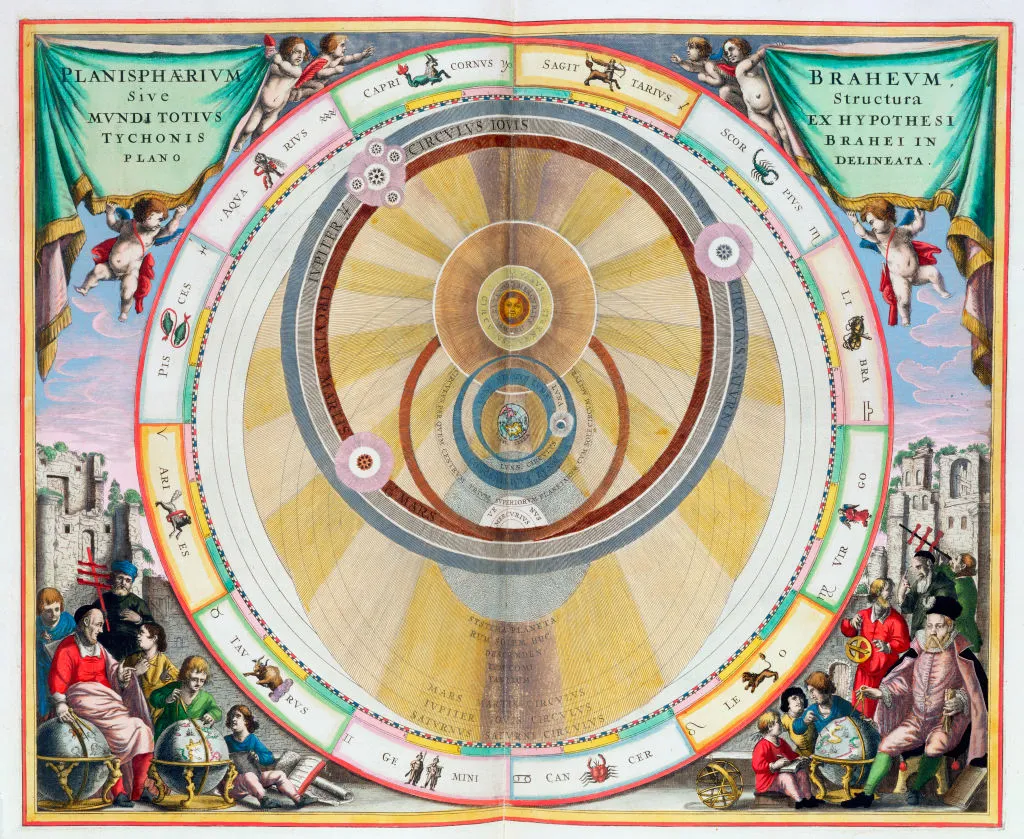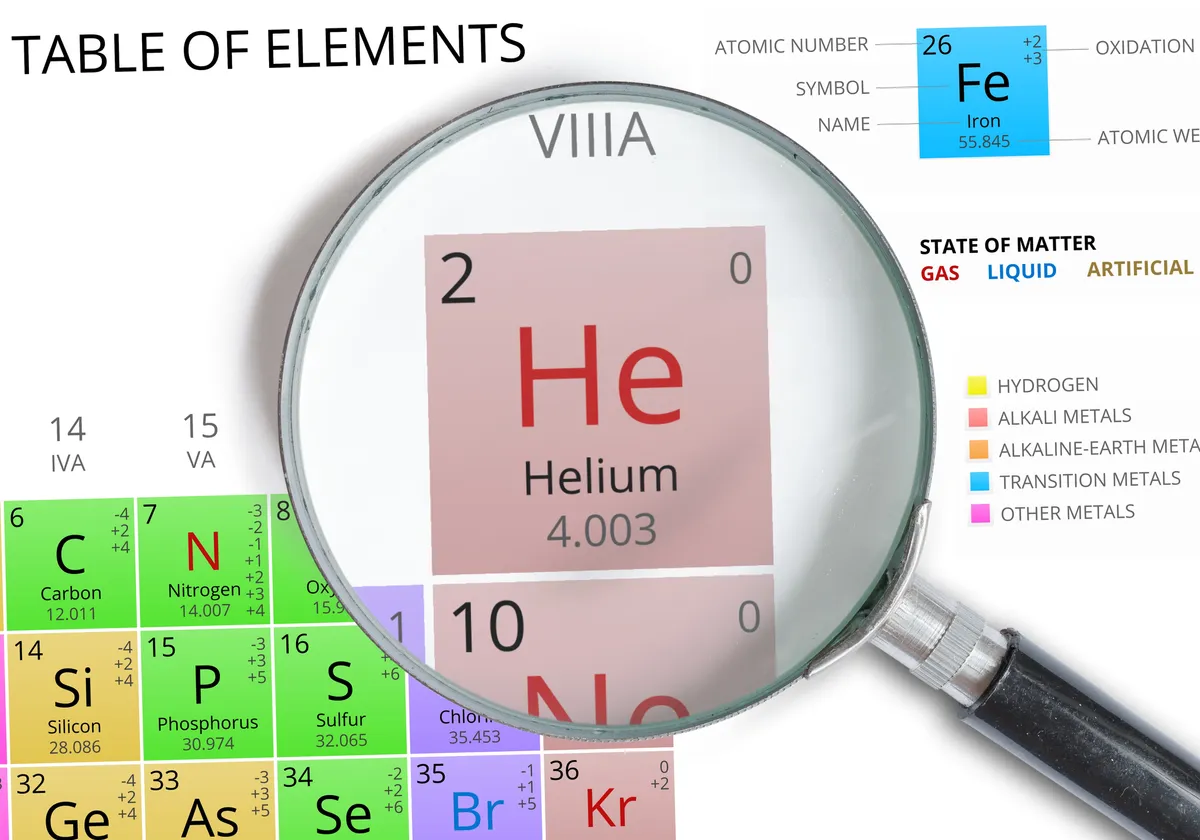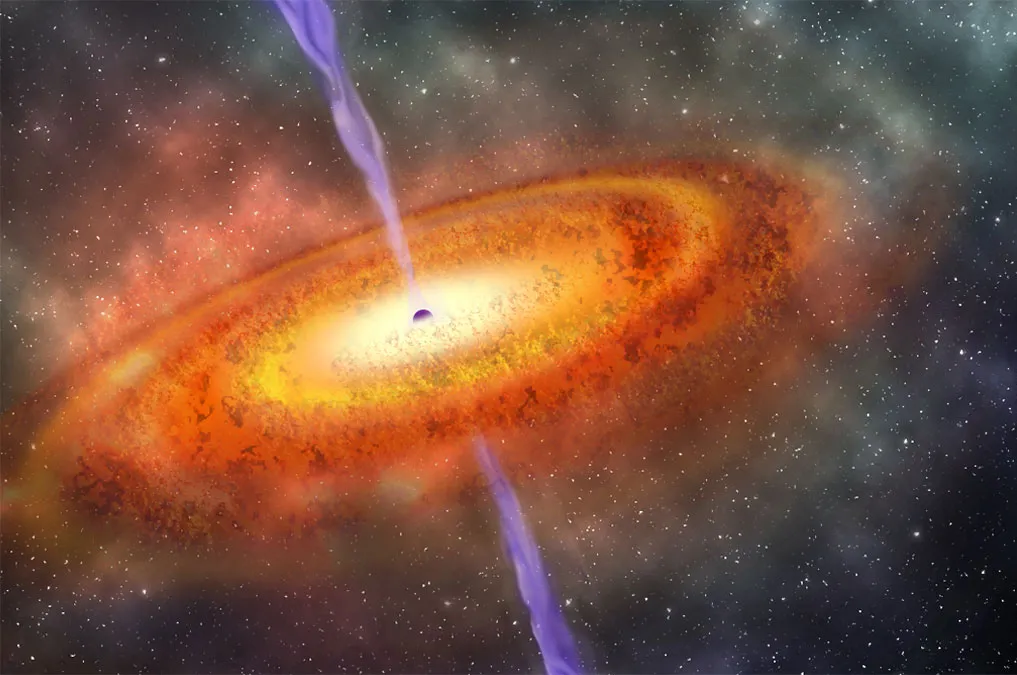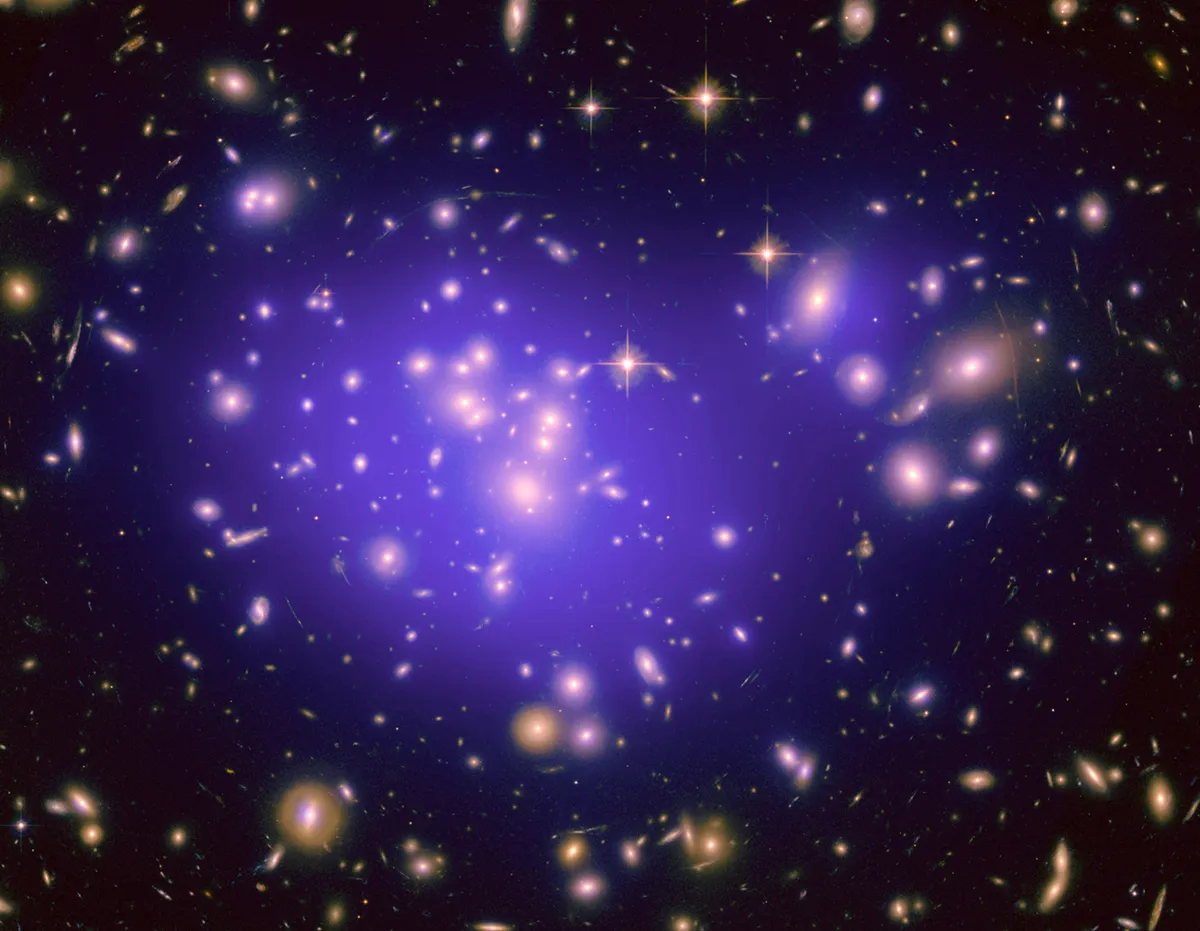The development of astronomy and cosmology on the largest of scales, and particle physics on the very smallest, has often been intertwined.
Ata glance, physics can seem a radically unfocused discipline. In a single research department you’ll find particle physicists investigating the smallest and most ubiquitous objects we know of, like quarks, leptons and bosons.
But you’ll also find astronomers (including astrophysicists and cosmologists) investigating the largest and most distant things that we know of, like galaxies, nebulae and black holes.
No other science comes close to matching interests on such a range of scales. So why do both extremes count within the remit of doing physics?

One suggestion is that physicists are interested in the small and big, the near and far, just because they are interested in everything.
At least that’s what the many physicists trying to find a ‘grand unifying theory of everything’ might tell you.
But the notion of ‘everything’ in this context can’t really mean everything we might possibly want a scientific theory for.
Physicists do not, for example, aspire to theorise about the zebra population of the Serengeti or about the rock strata in the Grand Canyon.
Those phenomena are within the remit of ecology and geology, not physics.
The search by physicists for a theory of everything is really a quest for a theory of the behaviour of the constituents of everything.
That explains the continuing interest by physicists in the ever smaller, but why do planets and stars remain of interest?
The reason, I suggest, is that the investigation of the far away big stuff is often of benefit to our ability to theorise about the nearby small stuff, and vice versa.
Astronomy as a science

For ancient astronomers, astronomy was entirely disconnected from the most learned proclamations about the workings of things on Earth.
As far as early Sumerians and Mesopotamians were concerned, Earth was inhabited by fallible humans and brute beasts while the heavens were reserved for the gods.
Later, Greek mythologies spoke of a special air, or ‘aether’, breathed by the gods in their celestial realm yet unattainable for the rest of us.
This unique substance eventually found its way into genuine speculation by way of Aristotle, who hypothesised about a fifth element to be contrasted with the more homely substances of earth, wind, fire and water.
Crucially for Aristotle, this fifth element did not obey the same laws of motion as the material things we can manipulate directly.
There would be little sense in expecting particle physicists and astronomers to share corridors if all this were true. But things changed.
The history of how the motions of the planets were brought within the scope of influence of Earthly mechanical laws is rightly one of the most celebrated achievements in science.

A first major step came from the careful astrometrical charts of Tycho Brahe. These motivated Brahe’s assistant, Johannes Kepler, to publicly question the perfection of the celestial realm by suggesting that the planets, including Earth itself, moved in ellipses around the Sun.
With the influence of more precise astronomical observations, Newton found it possible to further domesticate the motions of celestial bodies using laws that applied equally to the trajectories of mundane objects, like cannonballs and pendulums.
For the first time we had a single quantitative theory that could describe the motions of the very distant and large, as well as the very proximal and small.

As philosophers like to point out, this unifying capability of Newton’s theory made it all the more believable.
Newton’s achievement in unification was specifically one of the motion, or ‘mechanics’, of physical objects.
But physics today is not just concerned with how things move. It is concerned also with the behaviour of light, energy conservation, the sources of force, the basic constituents of matter and the structure of space and time.
In one way or another, astronomy has informed and been informed by all these areas.
The birth of astrophysics

Some 200 years after Newton’s mechanics came on the scene it became widely speculated among scientists that the planets and stars might not only move like things on Earth, they might also be composed of similar stuff too.
This was suggested by the fact that the spectrum of light which radiated from the Sun lacked certain wavelengths — the so-called ‘Fraunhofer lines’.
Curiously, many of these omissions from the spectrum corresponded to the wavelengths that were absorbed and radiated by known gases under a Bunsen burner flame in scientists’ laboratories.
In particular, hydrogen and sodium’s lines were clearly missing from the Sun’s spectra.
Employing the newly developed techniques of analytical spectroscopy that he developed with Robert Bunsen, Gustav Kirchhoff surmised that these elements must exist as a gas on the outer surface of the Sun and be absorbing the relevant wavelengths from hotter emissions in the Sun’s interior.

This was the first time the composition of a celestial body could be given in terms of substances familiar to us on Earth.
Yet that didn’t stop astronomers suggesting that the Sun might still have some further, unfamiliar ingredient.
In the aftermath of the 1868 solar eclipse, astronomers Pierre Janssen and Norman Lockyer independently worked out that certain wavelengths of light radiated by the Sun had not so far been observed from any known Earthly substances.
Lockyer promptly proposed a new element only to be found beyond Earth, which he gave the name ‘helium’, after the Greek ‘helios’ meaning Sun.
By that time, however, it was becoming less plausible to suggest a significant divide between the physics of Earth and of the stars.
Helium’s extraterrestrial credentials made its existence somewhat controversial.
Helium takes its place

So helium was left out of early periodic tables of the elements. It was only after it was eventually found on Earth, some 27 years later, that it was seen as necessary to accommodate the element in theory.
However, this didn’t prove so straightforward since the periodic table of elements was largely organised according to the reactivity of elements, and helium didn’t seem to react with much.
The solution was to propose an eighth group of elements, the ‘noble gases’, with helium taking the top spot.
Impressively, a substance first discovered far away in the heavens was now at the forefront of guiding the science of the local environment.
Following the discovery of helium on Earth there became an even stronger rationale for thinking the composition of celestial matter was likely to be of a similar kind to Earthly matter.
Physics as we know it today was starting to take root and with it a growing consensus towards the end of the 19th century that a small group of physical laws might describe all of the Universe’s phenomena.
As a consequence it began to be seen as totally acceptable to use theories about the subatomic to inform our theories of the astronomical and vice versa.
Hypothesising new celestial objects

One of the biggest developments in astronomy since then has been the discovery of new kinds of celestial entities.
Neutron stars and black holes are the most dense objects in the Universe and have an enormous impact on surrounding nebulae.
But the hypothesis of their existence came from the development of theories designed to probe the very smallest things known to science.
The new quantum theory, developed in the 1920s and 1930s, predicted that electrons can only occupy certain discrete and distinct energy states in an atom.
This implies that when a cluster of particles are densely packed, they will resist further packing by requiring some particles to enter higher energy states.
The resulting matter is very hot and very dense, but something with even greater density can be achieved if the forces of attraction among particles are overwhelming.

However, it is not just any cluster of particles that will have sufficient forces of attraction.
It was quickly realised that if some stars are massive enough (specifically, above the Chandrasekhar limit of around 1.4 solar masses, the theoretical maximum mass of a stable white dwarf star) then their own gravitational forces will be sufficient for further collapse.
Moreover, depending on how massive such a star is after it has gone supernova, its continuing collapse into an even more dense state can result in a neutron star (including pulsars and magnetars) or even a black hole, from which not even light can escape
The latter object was a controversial idea, but astronomers were confident that the new quantum mechanics would apply at large enough scales to validate the prediction.
As a consequence, neutron stars and black holes are nowadays familiar features of astronomical observations.
Important theoretical interpretations have also gone from the big to the small.

Perhaps the most impressive example of this comes from the observation by astronomers that the velocities of stars in the Milky Way (and, it turns out, other galaxies) can only be explained within the known laws of gravitation if a significant portion of that matter is hidden from view.
‘Dark matter’, as it has come to be known, defies even our most up-to-date and robust classificatory systems of the subatomic.
Physicists continue to discuss a wide range of possibilities for how it might turn out.
One suggestion is that dark matter comprises Weakly Interacting Massive Particles (WIMPs).
Another is that it is made up of axions, a hypothetical low mass particle.
In either case, dark matter seems unlikely to appear in the Standard Model of particle physics. And yet we strongly suspect that there is such stuff.
Here, then, we have a case in which astronomical observation has led us to think that our theories of the basic constituents of matter need revising.
Where particle physics and astronomy meet
The insights that particle physics and astronomy have brought each other explains why practitioners of both areas can expect to meet around the same water cooler.
Indeed, many of today’s physicists are well versed in both fields.
"There is," as physicist A Ravi P Rau explains, "a strong coupling between the subjects of astronomy and atomic and molecular physics."
Rau is surely right when he explains that this is partly due to the fact that "our knowledge of the astronomical world is derived from the emission, absorption and scattering of electromagnetic radiation from atoms and molecules.
"We ‘touch’ and discern the material content of these distant objects only through such absorptions and emissions."
But the coupling of astronomy and atomic physics is also due to the fact that astronomical events provide extreme conditions for atoms and molecules, without which we may never have learned new physics about what goes on here on Earth.
This article originally appeared in the May 2022 issue of BBC Sky at Night Magazine.
